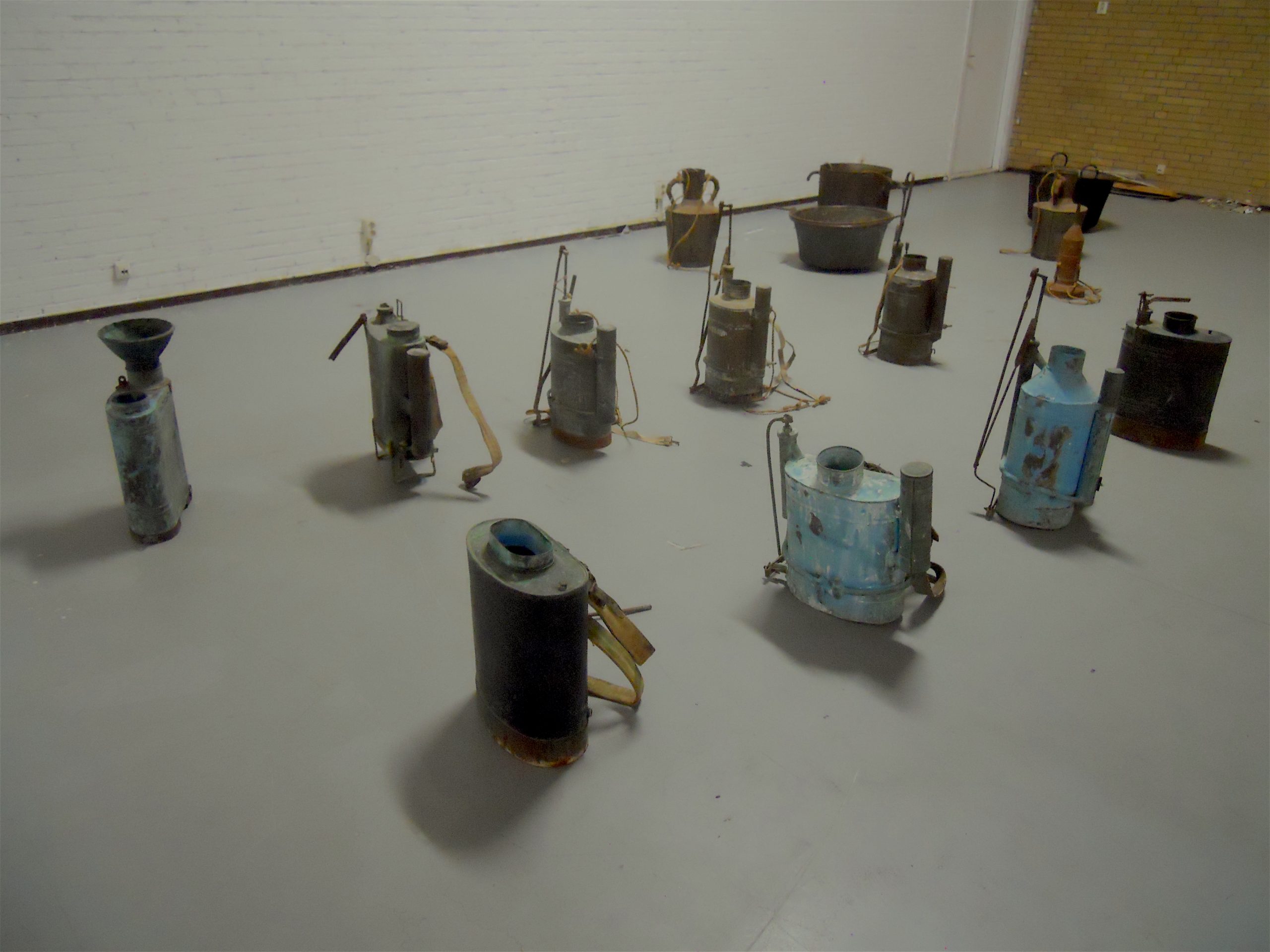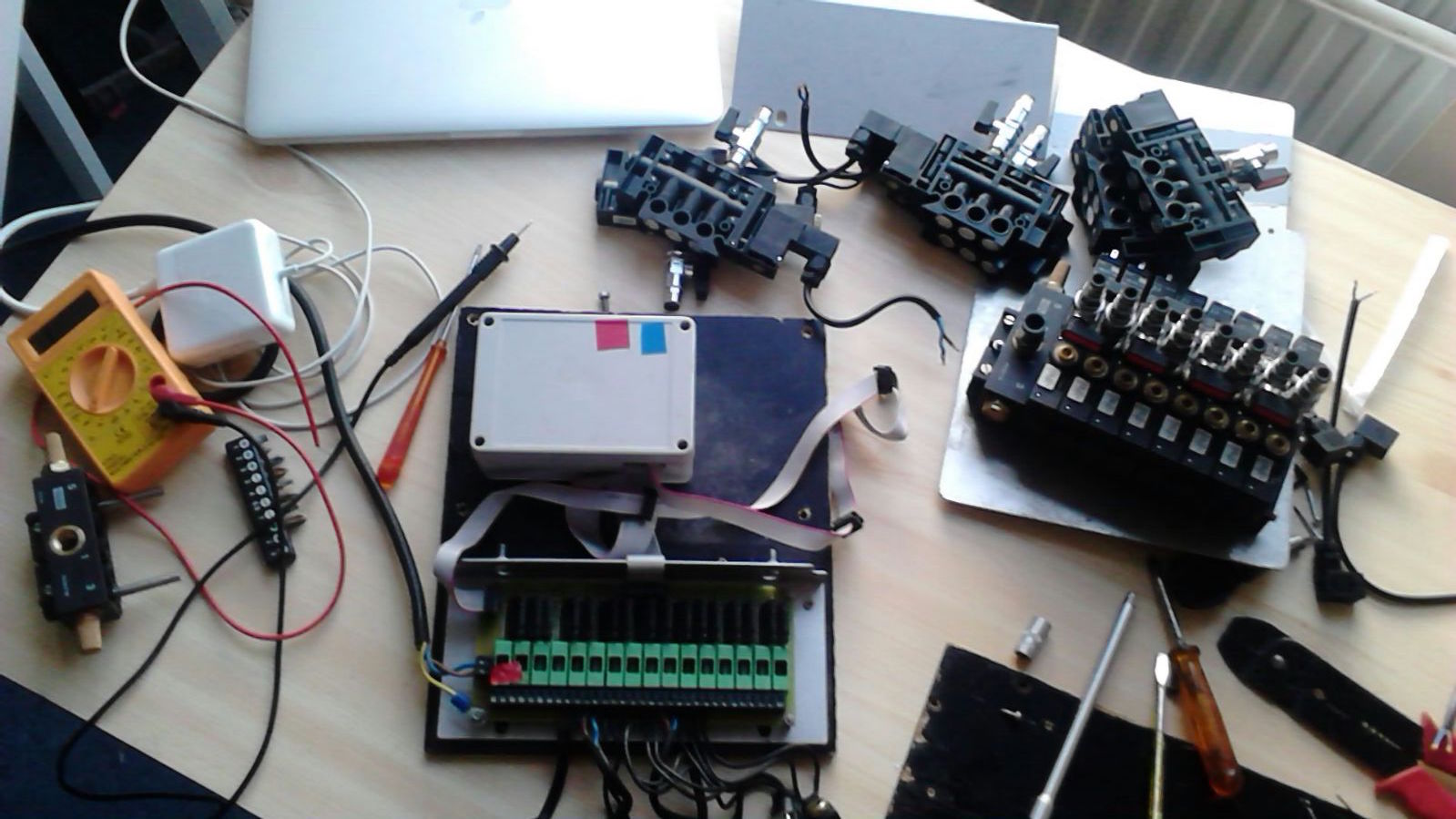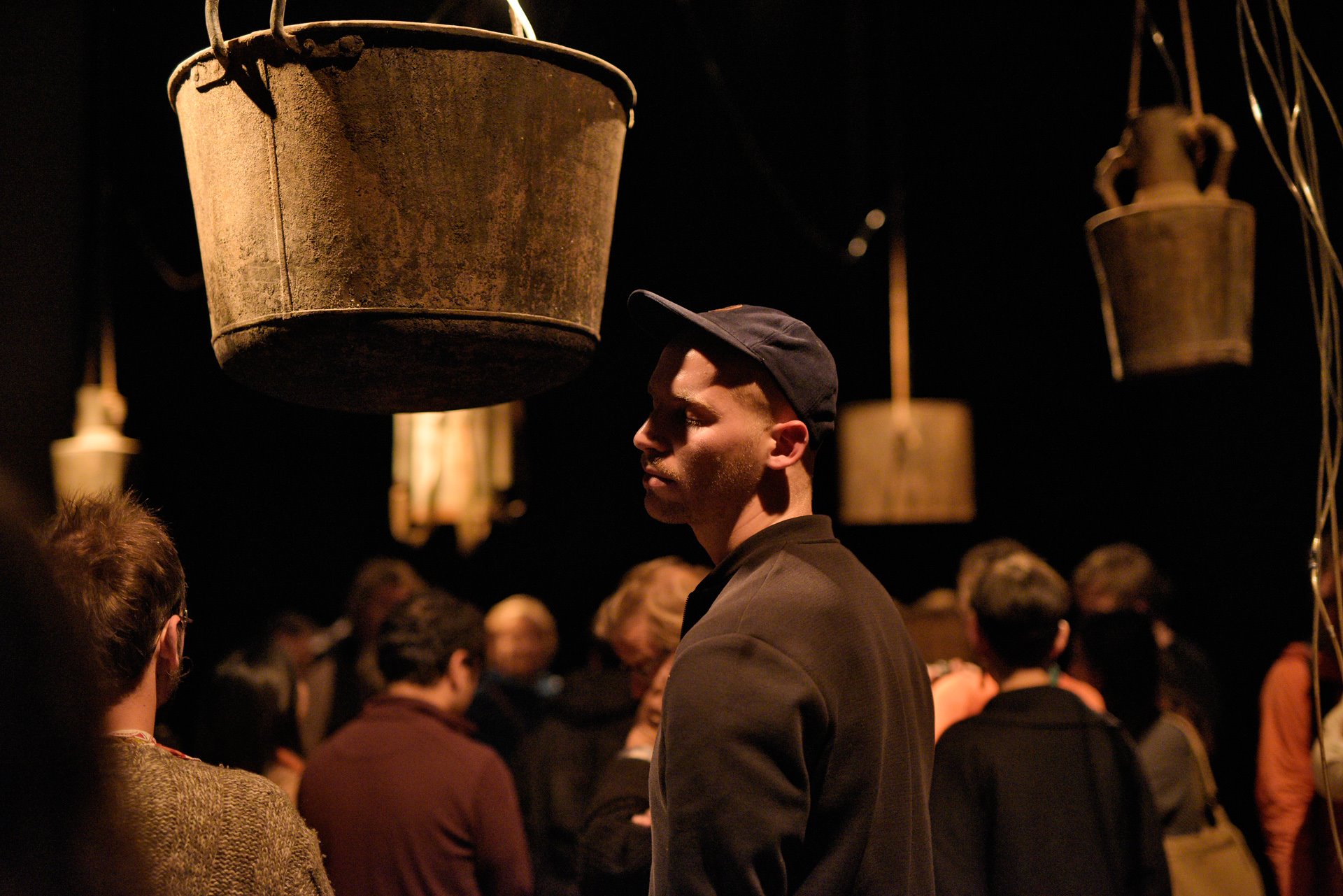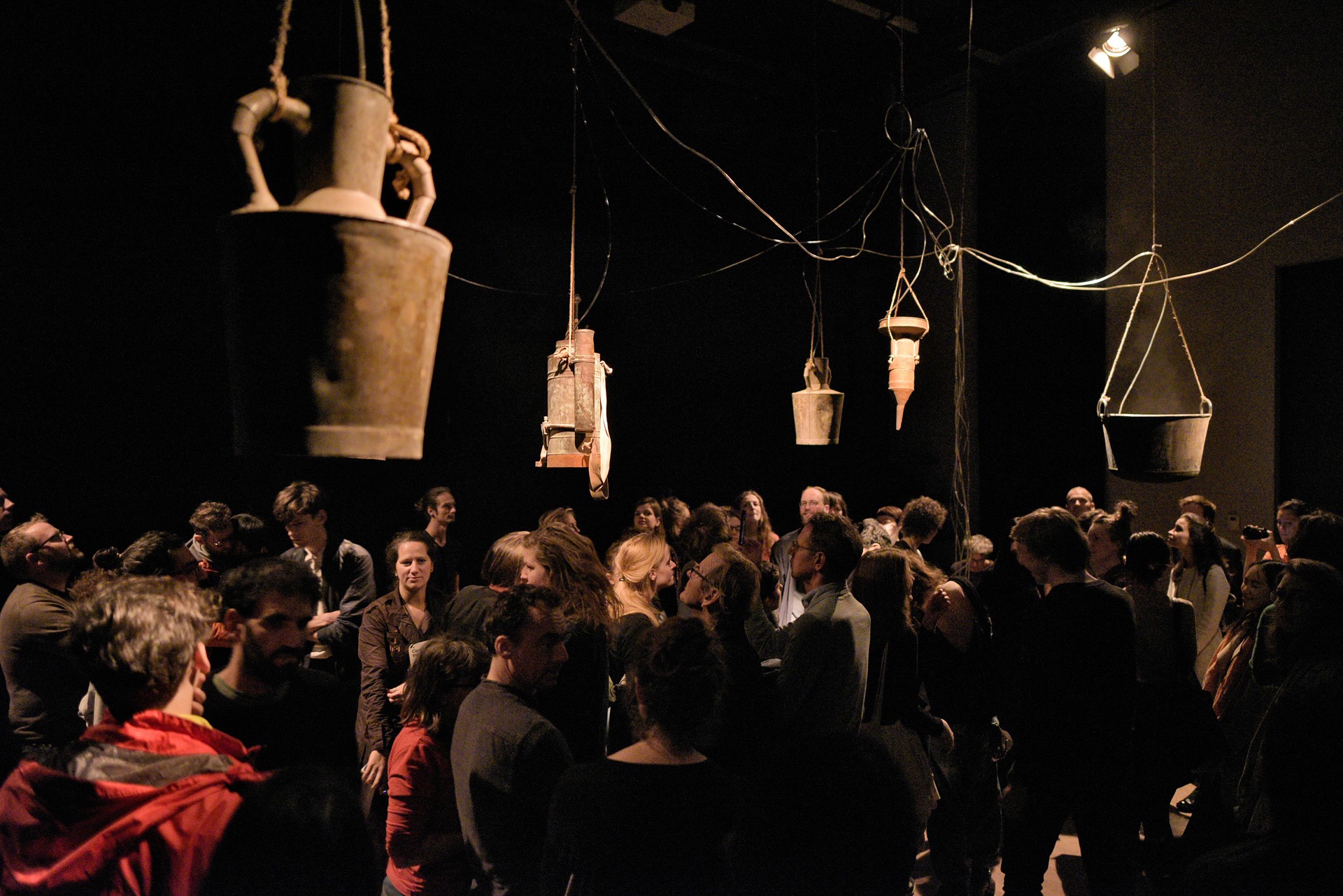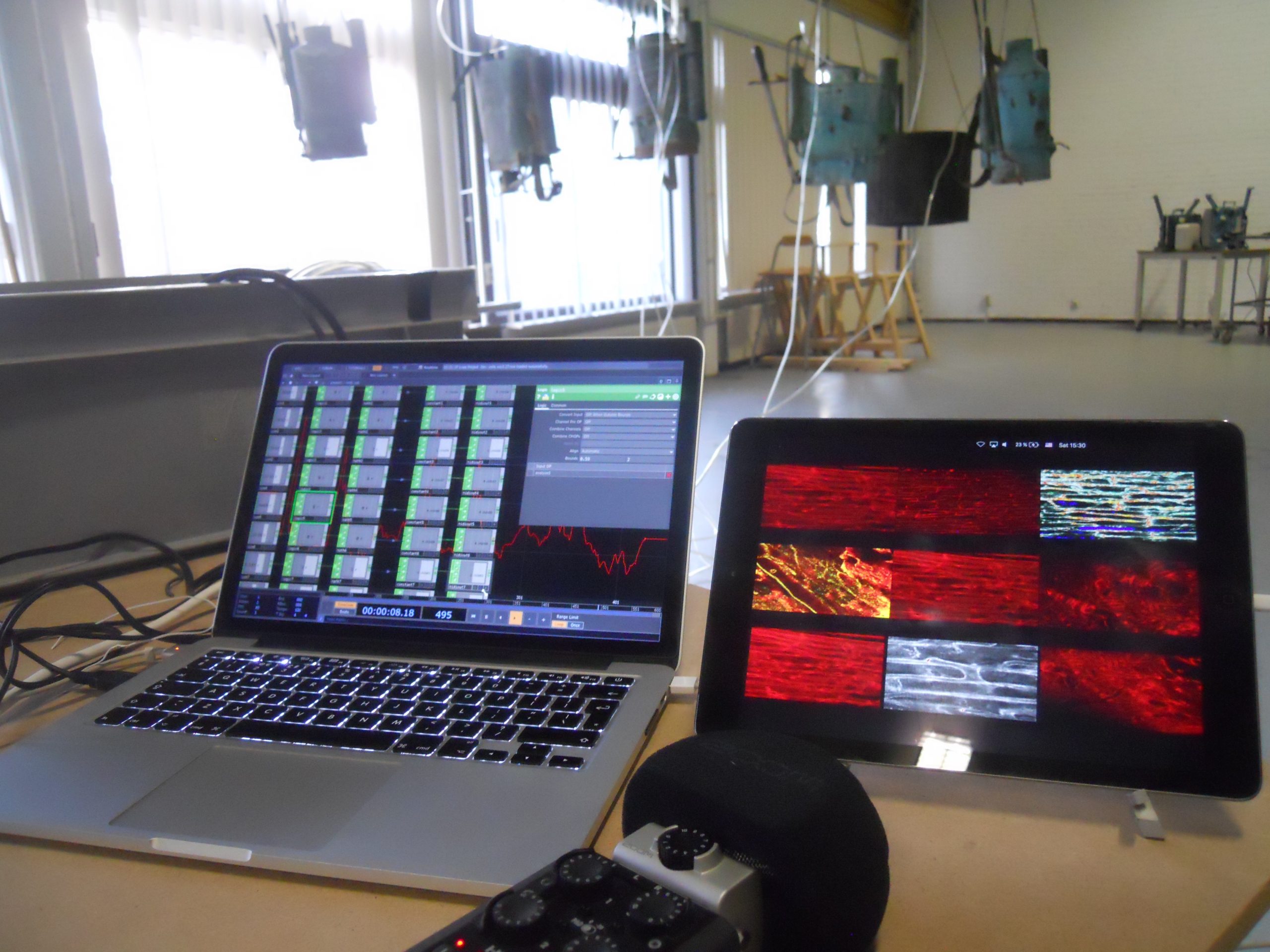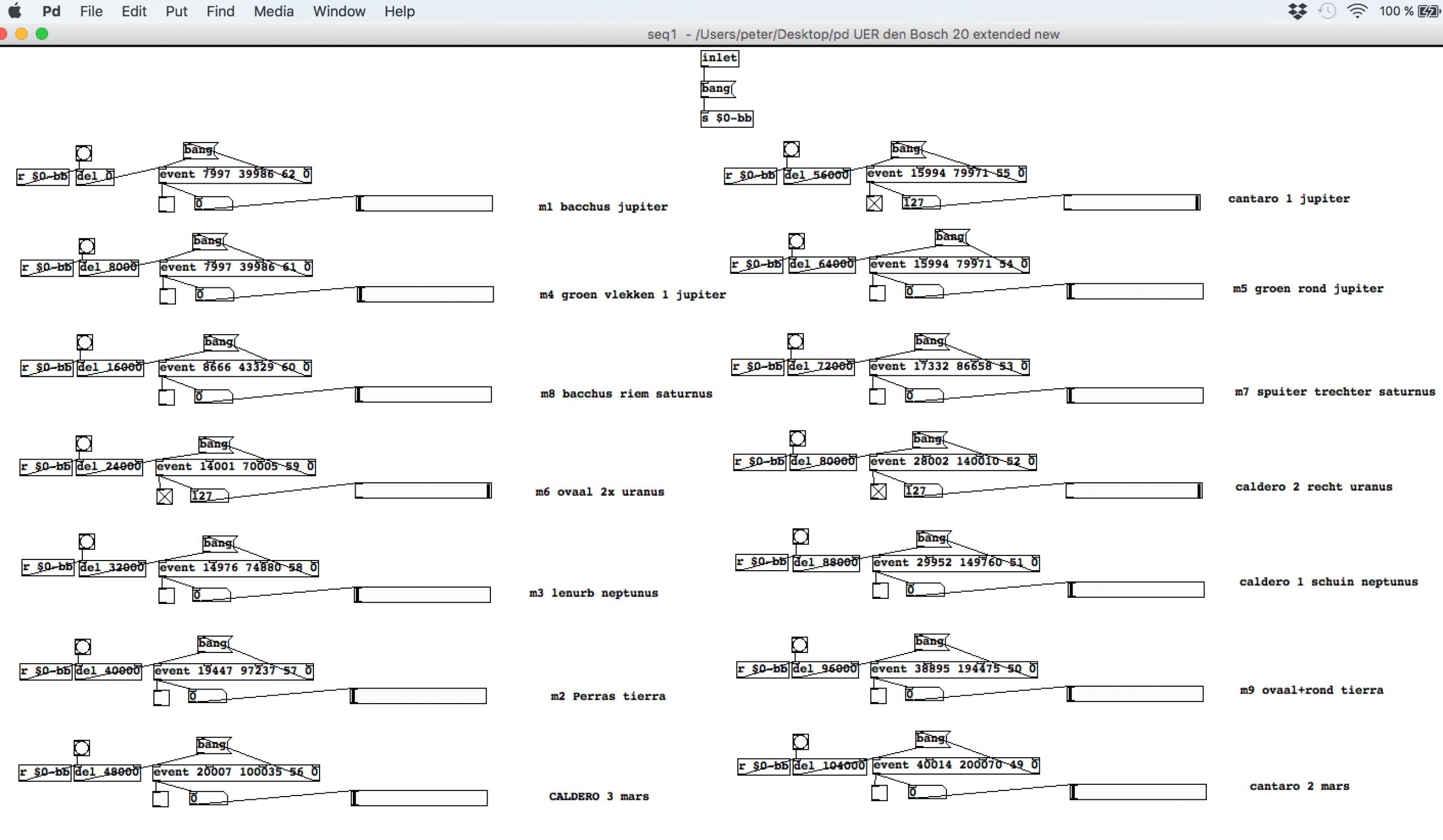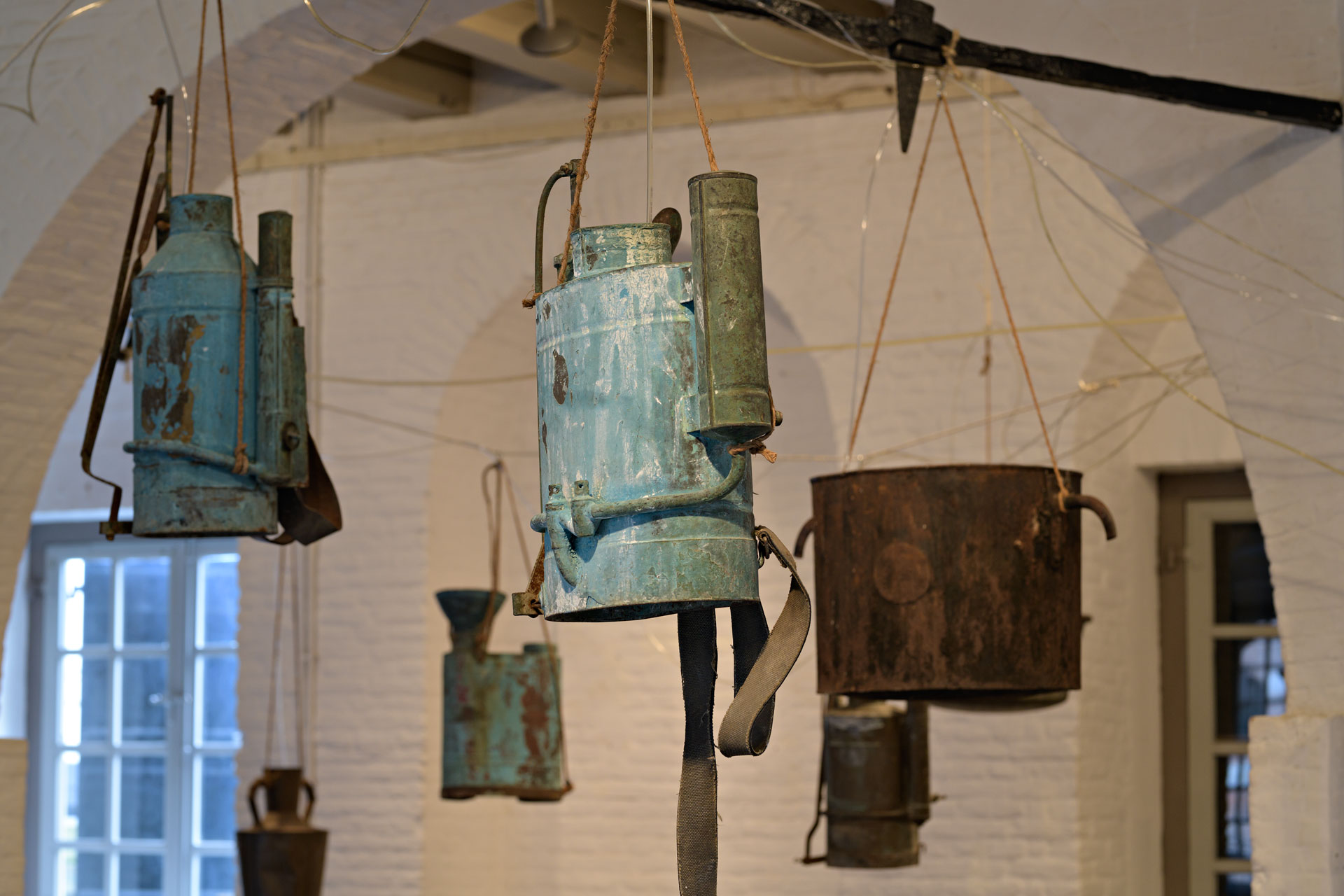
The aim of my residency was to build and finalise a new installation within the series Último Esfuerzo Rural for the exhibition the “Installatie Expeditie” at the Kruithuis in Den Bosch, as part of the festival November Music. As starting point I had the work Último Esfuerzo Rural III, premiered at the JustMAD Art Fair in Madrid, February 2017 within the framework of the EX prizes for Experimental New Media Art. In version III, we used seven antiquated metal objects, collected in the rural Spanish village where we live.
After losing their original functions, objects that remind us of everyday aspects from our recent past are given a new soul. Once brought into resonance by air-driven industrial vibrators, these objects recover their forgotten value by producing mysterious, hypnotic sounds; a process wherein the potential energy of once meaningful but now dead objects, is transformed into a spiritual experience, by stimulating their resonant frequencies in an unusually unpredictable and vivid manner.
On October 5, I presented the old version of the piece with seven objects, as part of “Connect the Dots: No Patent Pending #29. Normally the work is controlled by computer but at this event I opened and closed the individual taps of each vibrator manually. It exceeded expectations. The large public and the theatrical setting definitely helped.
After this event I started to work on a new version for November Music, twice as big as former versions. Prior to the residency, Simone and I decided to collect our most appealing objects such as old spraying equipment worn as backpacks when in use. It was quite easy to find more of these on the Internet, as they are a rather popular object in Spain to collect and hang on a wall. In the next step, I had to double the number of valves used for controlling the vibrators from 7 to 14.
Thereafter it was time to think about how to distribute the objects in space. In Mid-October Simone Simons came to The Hague for a few days and we looked at different setups. We liked to have a rather orderly distribution of the nine spray backpacks and a freer approach for the other five objects, a concept that I more or less maintained for the final exhibition in Den Bosch.
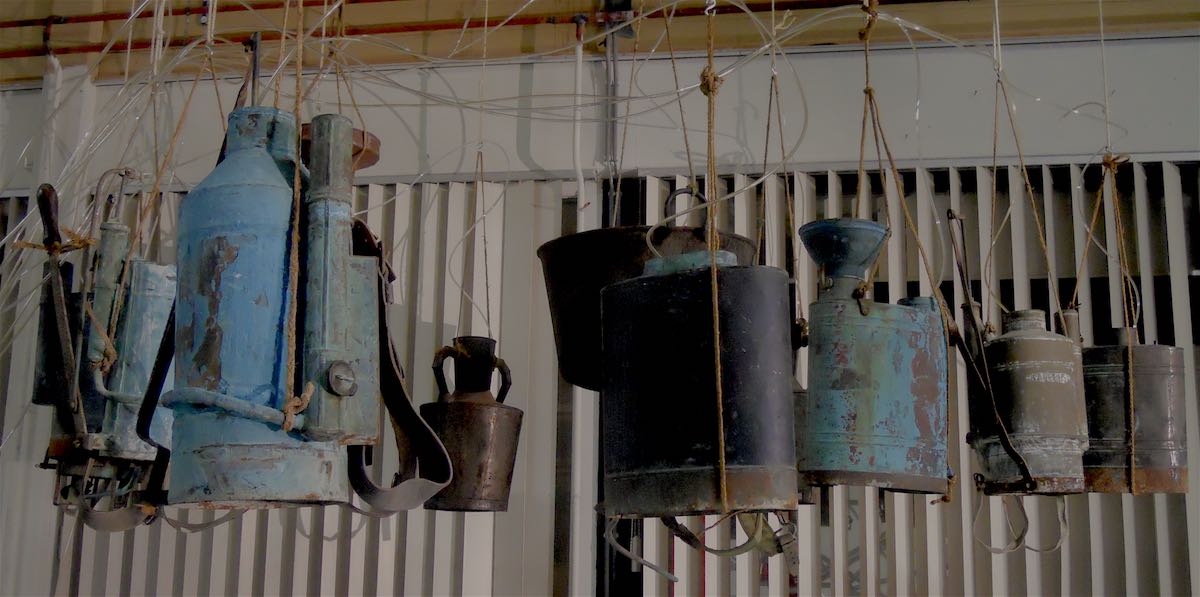
Thereafter I hung the objects in a very compact way in the workspace of iii to start testing sound and software. It was about time because soon thereafter, Russian scientist/sound artist Sergey Kostyrko came to The Hague for a weekend to test the response of the air-driven vibrators to RGB data of video footage for another collaborative project.
During the last week of the residency I worked on the software (PureData) for the exhibition. The program has the same structure as it did in former versions of the work. This structure is very simple: Each vibrator/object has it´s own on/off cycle, defined by how many milliseconds it is on and how many off. The program goes on “for ever”, regardless of whether the work itself is on or off.
During the tests I varied the length of the cycles and the percentage of time the objects were on. In the final version the length of the cycles varied between 40 and 200 seconds and the percentage of “on” per cycle was 20 %. For instance, object nº 1 has a cycle 39986 milliseconds of which it is first on for 7997 milliseconds and then off for ( 39986 – 7997 = ) 31989 milliseconds (see picture). The reality is more complex because all the vibrators receive the air from the same compressor and it might happen that a vibrator does not receive enough air to start at the programmed moment, depending on the amount of vibrators that are already on and the amount of air it receives varies.
Because most of the cycles have different lengths with hardly any numerical relationship, these two factors, together with the complex behaviour of the vibrators, make the results very unpredictable. Unpredictability is a theme you will find in all of our works. Our sounds always vary in little details and therefore we think it does not make much sense to make a fixed score. We merely play with parameters like duration and density to surprise not only the public but also ourselves. What is the “best solution” for each work and space is difficult to say. After all, this is a subjective matter.
At the very end of the residency, Tanja Busking did a video interview wherein I talk some more about the background of the work. I am happy with the final result that was shown at the exhibition in Den Bosch. The space itself is beautiful. Visually, it worked very well, but the acoustics were maybe a bit dull compared with the space I worked in during the residency. You always have to work on the spot on the sounds of the objects and often also on details in the software. You learn from each exhibition. This first appearance of this big setup was not a definitive version. Our works develop further over time and each show is different.
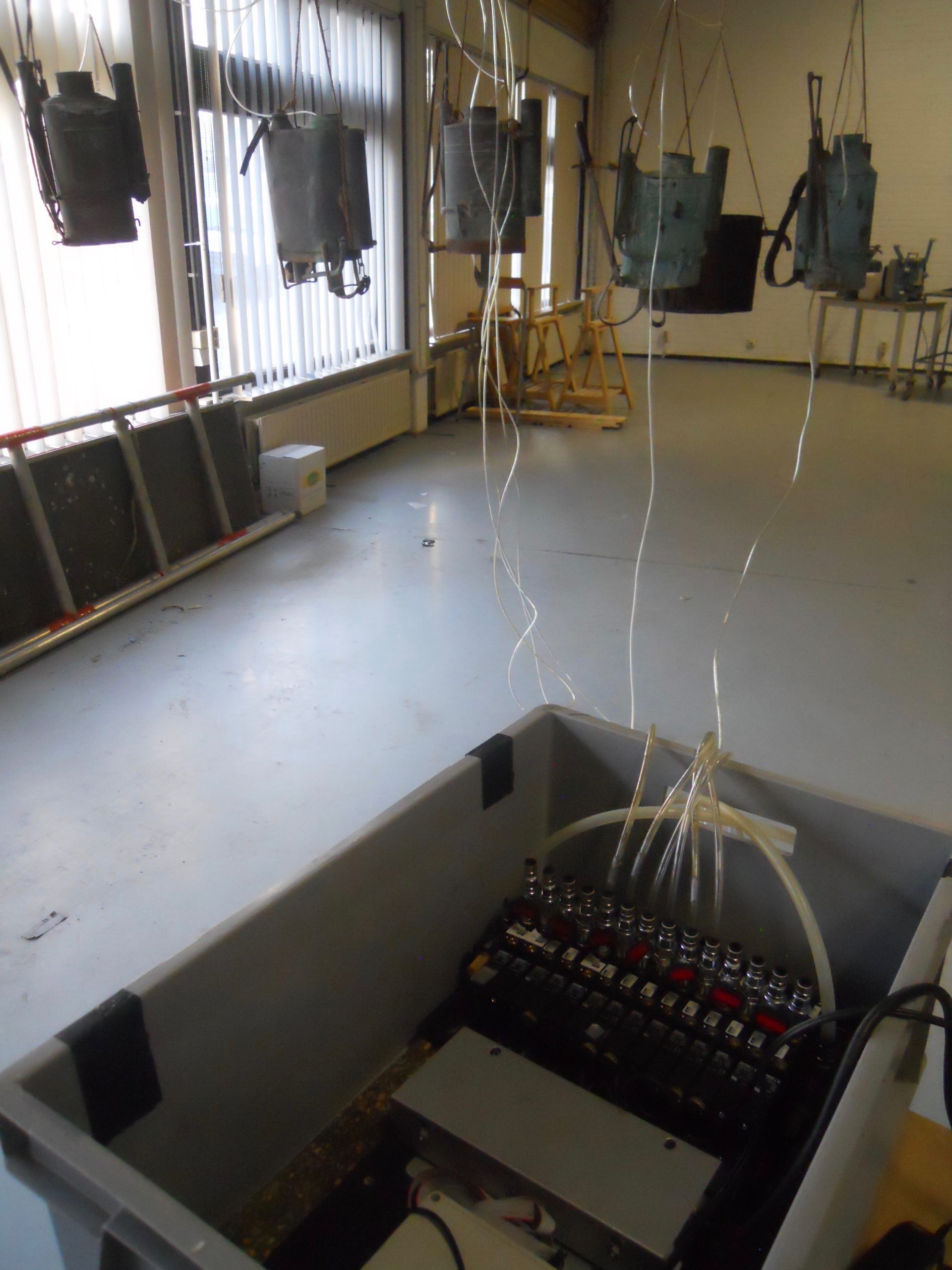
Bosch & Simons is a duo consisting of artists Peter Bosch and Simone Simons.
From 1985, the beginning of their collaboration in Amsterdam, Bosch & Simons have been involved in performances, concerts and theatre productions. Since 1990, however, they have focused in particular on the development of autonomous “music machines”. They have created installations in museums, at international symposiums and concert halls around the world.
Peter Bosch had a residency at iii from Oct 1 to 31, 2017.
See more from his residency here
www.boschsimons.com
https://www.facebook.com/BoschandSimons/
